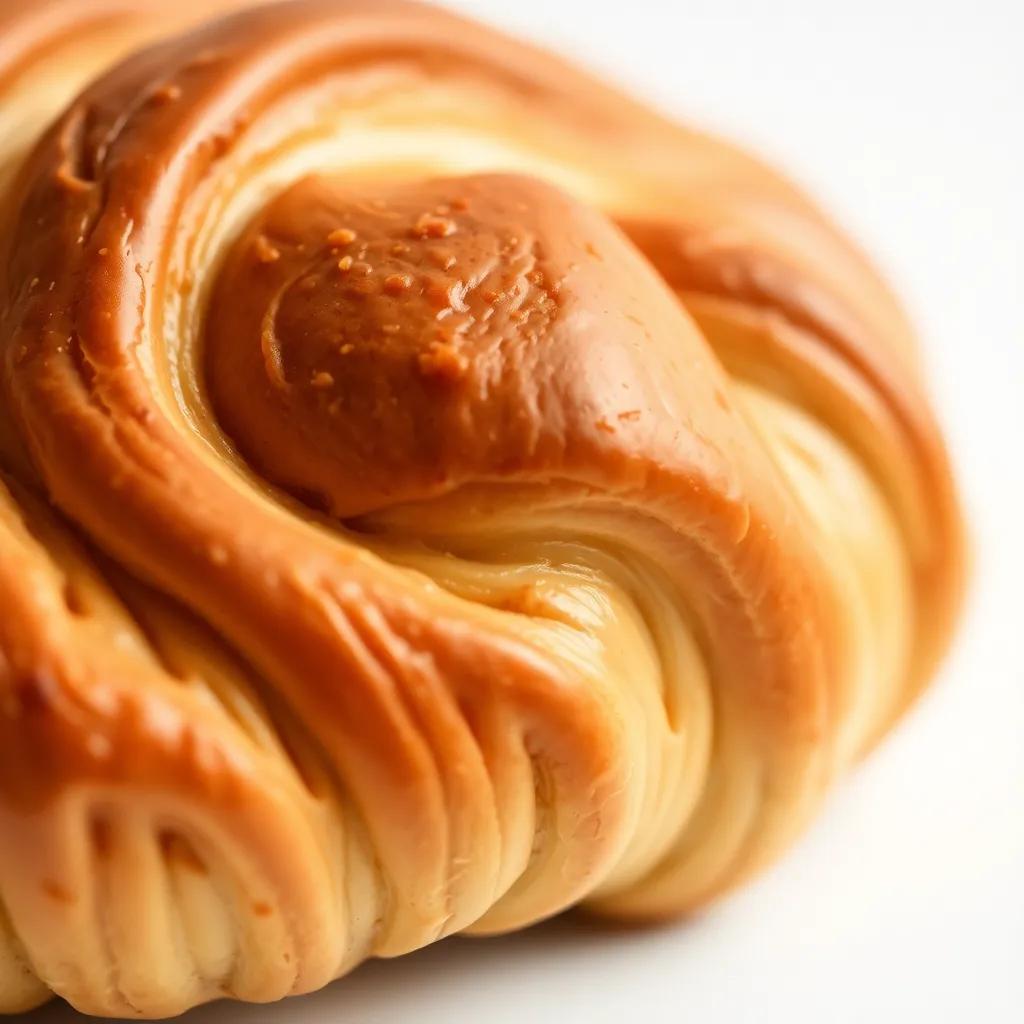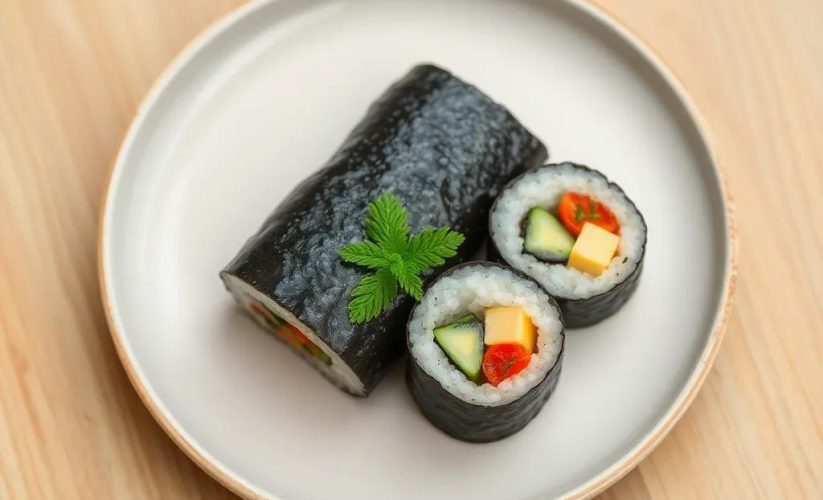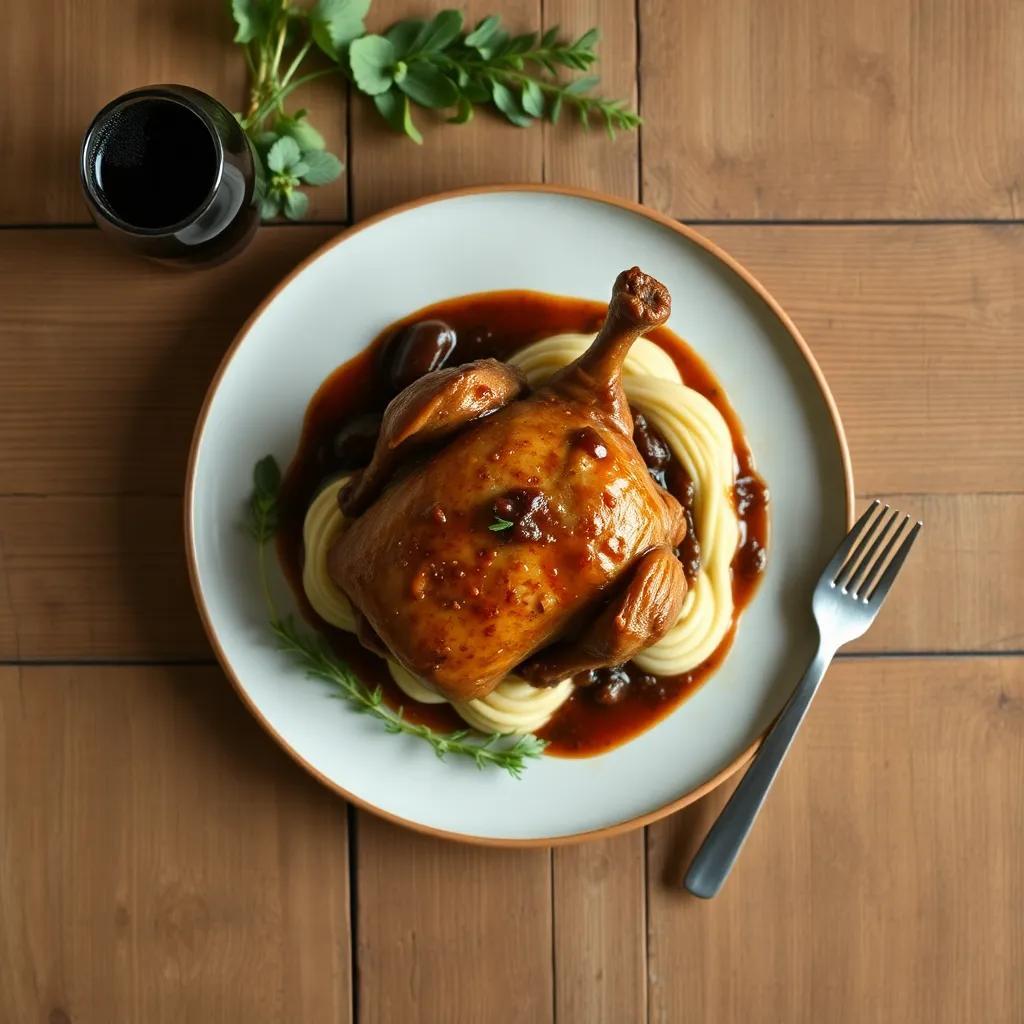Flaky, Golden Croissants Made Easy: Your Ultimate Baking Guide

Flaky, Golden Croissants Made Easy: Your Ultimate Baking Guide
🌍 Cuisine: French
⚙️ Difficulty: Medium
Ingredients
Nutrition Facts
~300
Instructions
- In a large mixing bowl, combine warm milk, sugar, and yeast. Stir gently, then let it sit for 5–10 minutes until frothy.
- Add flour and salt to the yeast mixture and stir until the dough starts coming together.
- Turn the dough onto a lightly floured surface and knead for about 5–7 minutes until smooth and elastic.
- Form the dough into a ball, place into a lightly greased bowl, cover with plastic wrap, and let it rise for 1 hour or until doubled in size.
- While the dough is rising, prepare the butter block: place the chilled butter between two sheets of parchment and pound/roll it into a 7×7 inch square. Keep refrigerated.
- Once dough has risen, punch it down gently and roll it out into a 14×7 inch rectangle.
- Place the butter block onto one half of the dough, then fold the other half over, sealing the edges.
- Roll the dough out into a 20×7 inch rectangle, then fold it into thirds like a letter (this is the first turn).
- Wrap dough in plastic and refrigerate for 30 minutes. Repeat the rolling and folding process two more times, chilling 30 minutes between each turn.
- After the final chill, roll the dough out to a 20×10 inch rectangle. Cut into eight triangles.
- Starting from the wide base of each triangle, roll up tightly toward the tip, shaping into croissants.
- Place croissants on a baking sheet lined with parchment paper. Cover and let rise for 1–1.5 hours until puffy.
- Preheat oven to 400°F (200°C). Beat the egg and brush over the croissants for a shiny, golden finish.
- Bake croissants for 18–20 minutes until golden brown and flaky.
- Remove from oven and cool slightly before serving.
Serving Suggestions
- Serve warm with butter and jam for a classic French breakfast.
- Pair croissants with a creamy cappuccino or rich hot chocolate.
- Slice horizontally and fill with ham and cheese for a savory breakfast sandwich.
- Accompany with fresh berries and whipped cream for a delightful brunch treat.
- Use leftover croissants to make bread pudding or French toast the next day.
- Drizzle with honey or dust with powdered sugar for extra sweetness.
- Enjoy alongside smoked salmon, cream cheese, and fresh herbs for a gourmet snack.
Table of Contents
- Intro
- Ingredient Notes
- Tips & Variations
- Leftovers & Storage
- Behind the Recipe
- FAQ
- Let’s Get Cooking!

Intro
There’s something truly magical about biting into a perfectly baked croissant—its delicate layers unfolding with a gentle flake, giving way to a tender, buttery crumb that melts in your mouth. While these golden beauties might seem like a baker’s secret, this guide reveals just how approachable crafting them at home can be. Whether it’s a leisurely weekend brunch, a special breakfast for loved ones, or an impressive treat to celebrate a morning milestone, homemade croissants elevate any occasion with their timeless charm.
Embarking on this baking adventure brings not only the satisfaction of creating a French classic from scratch but also the comforting aroma that fills your kitchen and the joyous anticipation of sharing these flaky wonders fresh from the oven. With patience and a few strategic steps, you’ll transform simple pantry staples into something truly spectacular—croissants that rival those from your favorite pâtisserie and might even become your new go-to indulgence.
Perfect for pairing with coffee, tea, or a glass of fresh juice, these croissants offer endless possibilities—from classic buttered simplicity to creative sandwiches or sweet accompaniments. As you follow along, you’ll gain confidence in dough handling and layering techniques that open doors to countless other laminated pastries. Ready to turn your kitchen into a slice of Paris? Let’s get started!
Ingredient Notes
When it comes to crafting croissants, a few key ingredients play starring roles in achieving that iconic flakiness and rich flavor. Understanding these components can elevate your baking experience and help you troubleshoot or customize with confidence.
All-Purpose Flour: While many traditional croissant recipes call for bread flour due to its higher protein content, all-purpose flour strikes a perfect balance by providing enough gluten structure for a tender yet resilient dough. Choosing a high-quality, unbleached all-purpose flour can make a noticeable difference in texture. Look for brands with a protein content around 10–11.5%, which encourages a good crumb without making the pastry tough. If you prefer a slightly chewier bite, you can blend in a bit of bread flour, but all-purpose makes this recipe very accessible without sacrificing flakiness.
Unsalted Butter (Chilled): Butter is the heart of every croissant—its fat layers create the delicate, flaky structure while imparting that luscious, buttery taste. Using unsalted butter is crucial here because it allows you to control the saltiness of the dough precisely. For the best results, select high-quality European-style butter, which has a higher fat content (around 82% or more) and a creamier texture. This produces a richer flavor and better lamination. Keeping the butter cold and firm throughout the lamination process prevents it from melting into the dough too quickly, helping you maintain those distinct layers. If you find European butter hard to source, a good-quality local unsalted butter with similar fat content will do—just be sure it’s fresh and well-chilled.
Active Dry Yeast: Yeast is the engine behind the rise and delicate air pockets within your croissants. Active dry yeast requires proofing in lukewarm milk to “wake up,” which ensures consistent fermentation and a reliable rise. Using fresh yeast with a strong “bubble and bloom” response will avoid dense or flat croissants. If time allows, you can experiment with instant yeast, which can be mixed directly into the flour for a slightly quicker rise, but active dry yeast delivers classic flavor and texture with its traditional proofing step. When buying yeast, check the expiration date and store it in a cool, dry place to maintain potency.
Whole Milk (Lukewarm): The milk adds subtle sweetness, moisture, and tenderness while helping to activate the yeast. Whole milk’s fat content contributes to a richer crumb and enhances browning during baking. Lukewarm temperature is key—too hot will kill the yeast, too cold slows fermentation. If you need a dairy-free alternative, unsweetened oat milk or almond milk can work, but remember these might affect the final texture and flavor slightly. For authenticity and best results, stick with whole milk, ideally fresh and not ultra-pasteurized, to preserve flavor nuances.
Being mindful of these ingredients—choosing quality flour, properly chilled butter, fresh yeast, and the right milk—can transform your croissant-making from a good attempt to a truly flaky, golden masterpiece. Each plays an essential role in the chemistry behind the layers and the buttery bliss awaiting your first bite.
Tips & Variations
Mastering croissants is as much about technique as it is about creativity, so here are some expert tips and inspiring variations to personalize your baking journey:
- Keep Everything Cold and Be Patient: The secret to flaky layers lies in maintaining cool temperatures throughout the lamination process. If your kitchen is warm, chill your work surface or take quick breaks in the fridge between folds. This slows butter melting and ensures beautifully defined layers rather than a greasy mess.
- Use a Sharp Knife or Pizza Cutter for Triangles: When cutting your dough into triangles, a clean, precise edge helps croissants roll smoothly and bake evenly. Dull tools can compress the dough edges, making shaping trickier and risking uneven puff.
- Experiment with Filling Options: Traditional butter croissants are stellar on their own, but these flaky canvases invite delicious add-ins. Try spreading a thin layer of almond paste or Nutella before rolling for a sweet surprise, or tuck in slices of ham and gruyère for savory croissants. Just avoid overfilling, which can cause leaks during baking.
- Customize the Sweetness: If you prefer less sugar, reduce it slightly without compromising yeast activation. Alternatively, sprinkle coarse sugar on top before baking for a subtle caramelized crunch. For a sophisticated twist, brush with honey right out of the oven, letting it soak in as the croissants cool.
- Swap Butter for Vegan Alternatives: Making croissants vegan is possible but challenging due to butter’s critical role. Try using high-quality vegan butter sticks designed for baking—ensure they have a similar fat content and remain firm when chilled. Keep the dough and butter chilled, and roll gently to retain layer separation. Coconut oil is usually too soft and can alter flavor, so choose plant-based margarines formulated for puff pastry.
- Gluten-Free Adaptations: Croissants owe their texture to gluten’s elasticity, so gluten-free versions require special flour blends and often xanthan gum or psyllium husk to mimic structure. Consider a well-reviewed gluten-free puff pastry mix as a base or try recipes dedicated to gluten-free laminated dough. Keep your expectations realistic; the flaky shear and chew may differ from classic croissants, but the buttery taste can still shine.
- Use a Stand Mixer with a Dough Hook: Kneading by hand is rewarding but labor-intensive. A stand mixer can help develop gluten gently and consistently while saving you energy—just be careful not to over-knead, which can make dough tough.
- Try Different Flours for Unique Texture: While all-purpose flour balances tenderness and structure, blending a small portion (10–20%) of spelt or whole-wheat flour adds nuttiness and complexity. Avoid using too much whole grain, which can weigh down the delicate layers.
- Adjust Proofing Time Based on Environment: Warmer kitchens speed up yeast activity, cooler ones slow it down. If your dough is doubling too quickly or too slowly, modify rising times slightly to ensure optimal puff and flavor development. You can also retard the final proof by refrigerating the shaped croissants overnight, which deepens flavor and improves flakiness.
These tips and tweaks empower you to tailor croissants to your kitchen, taste, and dietary preferences—all while nurturing your skills toward flaky perfection. Whether you stick to classic buttery goodness or venture into vegan or sweet-filled delights, this guide makes every buttery fold and golden bake a rewarding experiment.
Leftovers & Storage
Storing your freshly baked croissants properly ensures you can enjoy their flaky goodness beyond the first delightful morning. Because croissants are best when fresh and warm, leftover storage requires a bit of attention to preserve their texture and flavor without ending up with a soggy or stale pastry.
If you plan to enjoy the croissants within a day or two, keep them at room temperature in an airtight container or tightly wrapped in plastic wrap or reusable beeswax wraps. Avoid refrigerating croissants if you plan to eat them soon, as the cold environment causes the butter layers to firm up and the pastry to dry out faster, leading to a tougher crumb and diminished flakiness.
For longer storage, freezing is your best friend. Wrap each croissant individually in plastic wrap, then place them in a resealable freezer bag or airtight container to protect against freezer burn. Croissants freeze beautifully and can keep for up to 2 months without losing much of their allure. When you’re ready to enjoy, simply thaw them at room temperature for an hour or two, then refresh in the oven at 350°F (175°C) for 5–8 minutes. This gentle warming revives their flaky layers and buttery aroma, almost as good as fresh from the oven.
If you want to meal prep or bake ahead, you can also freeze the shaped, unbaked croissants after their initial proofing stage, before applying the egg wash. Place them on a parchment-lined baking sheet and freeze until solid, then transfer to a sealed container or bag. To bake from frozen, allow them to thaw overnight in the fridge and then come to room temperature and rise slightly before brushing with egg wash and baking as usual. This method means fresh-baked croissants are ready whenever you crave them, with less hassle on the day of serving.
When packing croissants for lunch or a picnic, wrap them loosely in parchment paper to keep their exterior crisp yet protected. Including a small container of butter, jam, or sliced cheese in the lunchbox can make for a delightful, indulgent treat on the go.
Remember, croissants are at their peak within 24 hours of baking, so try to consume them promptly for the ultimate experience. Still, with proper wrapping and freezing techniques, you can hold on to that flaky, golden magic a little longer without sacrificing too much of their charm.
Behind the Recipe
Croissants are more than just a breakfast pastry—they’re a symbol of French culinary artistry and a testament to the craft of patience and precision. Originating in Vienna in the 17th century as the “kipferl,” a crescent-shaped pastry, the croissant made its grand journey to France where it blossomed into the flaky, buttery icon we cherish today. French bakers refined the technique of lamination—folding chilled butter into dough multiple times—to create the delicate layers that define a truly exceptional croissant.
This recipe is inspired by that rich history but tailored to welcome home bakers of all levels. It balances tradition with accessibility, demystifying the seemingly complex lamination process and breaking it down into manageable steps. The story behind these croissants is also personal: it reflects countless mornings spent experimenting in humble kitchens, where the rewarding scent of freshly baked dough became a bridge between cultures, memories, and even family traditions.
By sharing this recipe, the aim is to invite you into that timeless pastry ritual—bringing a little piece of Paris onto your countertop without the need for a professional bakery or exotic ingredients. Each fold and chill echoes centuries of culinary evolution and passion, reminding us that sometimes, the simplest ingredients combined with care can create magic.
So as you take your time rolling and folding, know you’re not just crafting dough—you’re connecting to a legacy of flavor and craftsmanship that transcends borders, one golden croissant at a time.
FAQ
Can I use a food processor instead of mixing the dough by hand?
What’s the best way to store leftover croissants?
Can I make croissants using whole wheat flour instead of all-purpose?
Is it okay to use margarine or a butter substitute?
How do I know if I’ve rolled the dough enough during lamination?
Can I add fillings like chocolate or ham and cheese before baking?
What’s the best way to reheat croissants without making them soggy?
Let’s Get Cooking!
There’s something truly magical about biting into a flaky, golden croissant fresh from your own oven — a perfect balance of buttery layers and delicate crispness that makes the effort more than worthwhile. With this guide, making those irresistible pastries at home is no longer a secret reserved for only the most seasoned bakers. Whether you stick to the classic or add your personal twist, the joy of crafting croissants from scratch is sure to bring a little extra warmth to your kitchen and your mornings.
We’d love to hear how your croissant journey turns out! Feel free to leave a comment, rate the recipe, or share your own creative variations. After all, baking is best when it’s shared—so let’s inspire each other to keep those golden layers coming!












